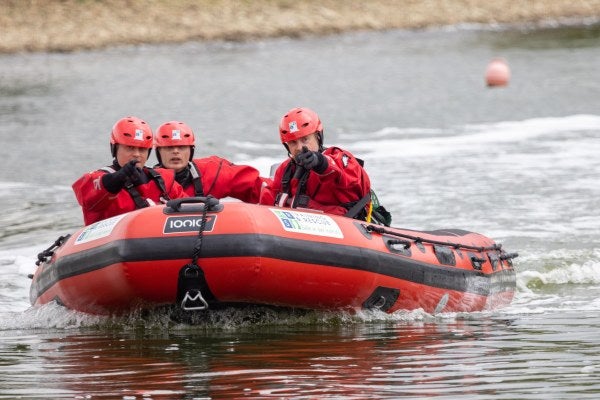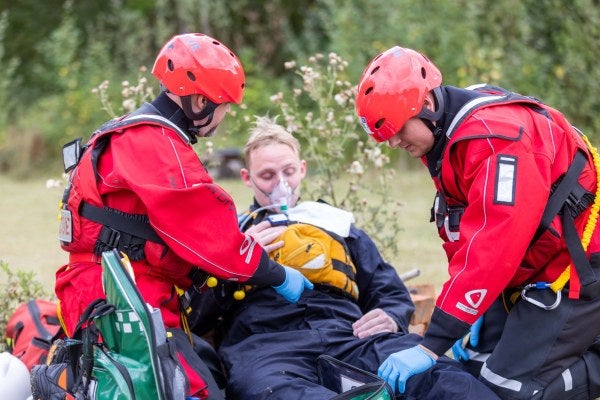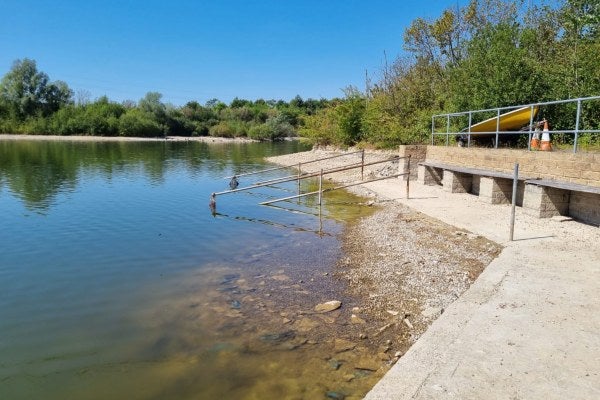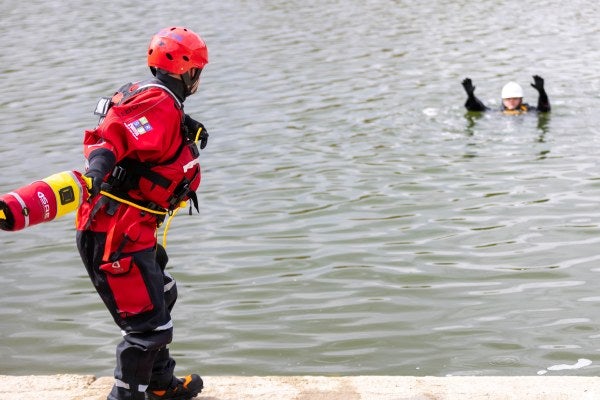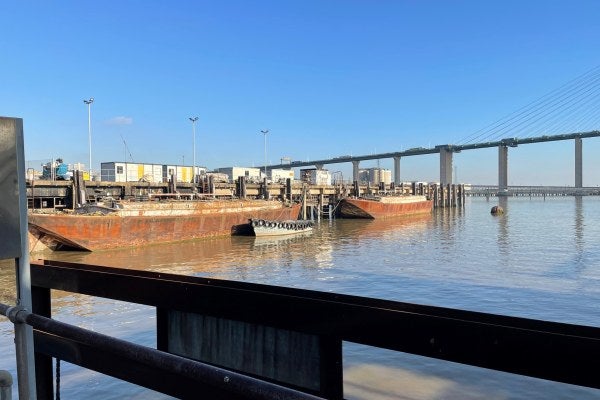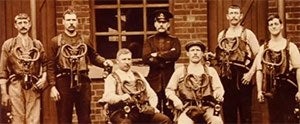Many industries rely on the power and force of natural water sources. From turning wheels or powering engines, water has many applications in industrial settings. The use of natural water sources often requires workers to be in, on or around water – and when this happens, there is a need to consider safety planning.
MRS Training & Rescue provide water rescue and safety boat services – for industrial settings. With our experience, qualifications, and accreditations we can provide safety boat services to assist and provide cover for work in, on or near water.
The Royal Lifesaving Society UK (RLSS UK) states that on average 313 UK and Irish citizens will lose their lives to accidental drowning each year.
Industrial Water Settings
Many different sectors complete work or maintenance near natural water sources – settings can include:
- Jetties
- Docks
- Rivers
- Weirs
- Culverts
- Quarries
- Reservoirs
In these types of settings, a safety boat can be an essential element to those working in and around water, playing a crucial role in safe access, site surveys, accident prevention and emergency arrangements.
The Health and Safety Executive states that ‘If people must work over or in the vicinity of water or any other liquid, there must be measures in place to prevent a fall into it, and if need be, effect a safe rescue’.
Many different types of organisations use safety boat services, including construction, milling, engineering, civils, environmental agencies, outdoor pursuits, water sports and many more. Companies like these often require this type of service to enable safe access, environmental audits, surveying and transportation of people and equipment.
In addition to industrial application, safety boat services are also essential for many sporting events that take place around water. We can also provide event water safety and rescue.
Safety Boat and Water Rescue Services
MRS Training and Rescue’s water rescue service is designed to provide clients with an on-site water rescue capability supporting your operational needs. This can include a power boat that meets the ‘Maritime and Coast Guard Agency Rescue Boat Code, the Code of Practice for open rescue boats of less than 15 metres in length’.
To ensure you have access to expertise and equipment needed to operate safely, a skilled Swift Water Rescue team and boat operator will be on hand to provide guidance, help and support, which is particularly useful for those who operate in remote or challenging environments.
Offering safety boat services requires a special skillset, and operators should be competent and conversant in UK Health and Safety legislation and procedures, such as risk assessment, with accreditations and qualifications from notable sources, such as IOSH and NEBOSH.
The core competency for the team is that of Swift Water Rescue often referred to as SRT. These highly skilled DEFRA standard teams have training and ability around:
- Hydrology
- Water hazards
- Boat handling
- Environmental considerations
- Flood conditions
- Rigging
- Rescue techniques
- Self-rescue
- Pre-hospital care / First Response Emergency Care (FREC)
- Stretcher handling
Safety is everything and the main tacit of these teams is to operate from land as much as practically possible using specialist equipment and tactics such as:
- Harnesses utilising restraint
- Throw lines
- Floating ropes for rigging
- Pulleys and anchors
- Rescue poles
- Upstream protection - spotter
- Downstream protection – protection spanning the river
- Power boat
These teams are equipped with the latest rescue equipment and undergo regular training to ensure competency and awareness of latest techniques, including the hazards of fast flowing water or swollen rivers, live bait rescue using a line, self-rescue procedures and retrieval of a casualty to safety.
Why do I need to provide this when I’ve seen pictures of the fire service in their rescue boats helping?
It’s a fair question to ask, and in going back to basic principles of the Health and Safety at Work Act 1974, it’s the employers’ responsibility to provide ‘a healthy and safe working environment’.
Further detail is provided in the Management of Health and Safety at Work Regulations 1999, which states employers shall have procedures for serious and imminent danger and for danger areas.
Additionally, legislation, such as the Confined Space Regulations 1997 and the Work at Height Regulations 2005 with associated codes of practice state that employers should not be reliant on public emergency services in the first instance and that a duty of care to provide rescue and emergency treatment exists.
MRS Training & Rescue often works in hazardous environments and recognises that occasionally, even with the best of provision injuries and illness can occur. The Swift Water Rescue Technicians are all trained to provide pre-hospital care up to and beyond basic first aid, which can include, but not limited to:
- Casualty observations (glucose, pulse oximetry, blood pressure, temperature)
- Haemorrhage control (basic bandaging, wound packing, haemostatics and tourniquet)
- Airway management (postural, adjuncts, such as nasal and oral, supraglottic airway)
- Defibrillation
- Emergency Oxygen and associated equipment, such as bag valve mask
- Pain Relief
- Trauma care (Fracture management, head injury, spinal injury)
- Extremes of temperature (hypothermia or heat stroke)
As first responders this enables our safety boat team to provide an excellent initial response to emergencies that occur on or near water, enabling a rapid transfer to public emergency services and hospital care.
MRS Training and Rescue teams have additional training and experience in Work at Height and Rescue, High Risk Confined Space Rescue and Mines Rescue often teaching courses on the topics they actively work in. Ensuring these highly trained and experienced experts are well equipped to provide clients with the support they need to operate safely and effectively in and around water.


